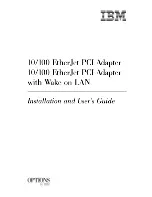
Chapter 16 VoIP
Management Switch Card User’s Guide
603
3
Proxy 2
sends a SIP INVITE request to
User Agent 2
.
4
User Agent 2
sends a response back to
Proxy 2
indicating that the phone is ringing. The response
is relayed back to
User Agent 1
via
Proxy 1
.
5
User Agent 2
sends an OK response to
Proxy 2
after the call is answered. This is also relayed
back to
User Agent 1
via
Proxy 1
.
6
User Agent 1
and
User Agent 2
exchange RTP packets containing voice data directly, without
involving the proxies.
7
When
User Agent 2
hangs up, he sends a BYE request.
8
User Agent 1
replies with an OK response confirming receipt of the BYE request, and the call is
terminated.
16.1.4 Introduction to H.248
The H.248 protocol, also known as MEGACO (MEdia GAteway COntrol) or the Gateway Control
Protocol, defines a VoIP network in which basic functions (such as voice coding and decoding) are
performed by one device, and higher functions (such as setting up and managing calls) are
performed by another.
The H.248 protocol was developed jointly by the IETF (Internet Engineering Task Force) and the ITU
(International Telecommunication Union). It is defined by the IETF in RFC 3525, and by the ITU in
ITU-T H.248-1.
While SIP (Session Initiation Protocol) VoIP networks have no separate control unit, relying instead
upon intelligent endpoints, an H.248 VoIP network has a single intelligent control unit, which
manages a network of dumb endpoint devices.
An H.248 VoIP network consists of one or more media gateways and a media gateway controller.
• Media gateways (MGs) encode and decode voice data, transmitting it from one network to
another (for example, from the PSTN to an IP network, and vice versa). The H.248-enabled VoIP
line cards are MGs.
• Media gateway controllers (MGCs) are intelligent devices that manage the media gateways. They
set up, manage and tear down calls by providing instructions to the MGs.
The figure that follows compares a basic SIP network with an H.248 network.
• In the SIP example, analog telephones
A
and
B
each connect to a
SIP ATA
(Analog Telephone
Adaptor). The
ATA
s not only encode and decode the voice data between the analog and IP
networks, but also set up, maintain and end the call.
• In the H.248 example, the
MG
allows the users of analog telephone
C
and IP telephone
D
to
communicate by reporting events to the
MGC
(for example, if the user of phone
C
dials a
sequence of numbers). The MGC interprets the information according to its programming and
issues the relevant commands to the
MG
(for example, telling the
MG
how to connect phones
C
and
D
in a call, or telling the
MG
to play a busy tone to phone
C
). See
Summary of Contents for MSC1000G Series
Page 38: ...Table of Contents Management Switch Card User s Guide 38...
Page 39: ...39 PART I Introduction...
Page 40: ...40...
Page 54: ...Chapter 1 Getting to Know Your MSC Management Switch Card User s Guide 54...
Page 61: ...61 PART II Web Configurator...
Page 62: ...62...
Page 80: ...Chapter 3 The Web Configurator Management Switch Card User s Guide 80...
Page 162: ...Chapter 5 Alarm Screens Management Switch Card User s Guide 162...
Page 178: ...Chapter 6 Diagnostic Screens Management Switch Card User s Guide 178...
Page 184: ...Chapter 7 Maintenance Screens Management Switch Card User s Guide 184...
Page 204: ...Chapter 8 Multicast Screens Management Switch Card User s Guide 204...
Page 226: ...Chapter 9 Subscriber Port Setup Screens Management Switch Card User s Guide 226...
Page 227: ...Chapter 9 Subscriber Port Setup Screens Management Switch Card User s Guide 227...
Page 330: ...Chapter 10 IMA Screens Management Switch Card User s Guide 330...
Page 412: ...Chapter 11 Profile Screens Management Switch Card User s Guide 412...
Page 512: ...Chapter 12 Statistics Screens Management Switch Card User s Guide 512...
Page 560: ...Chapter 13 Switch Screens Management Switch Card User s Guide 560...
Page 598: ...Chapter 15 VLAN Screens Management Switch Card User s Guide 598...
Page 636: ...Chapter 16 VoIP Management Switch Card User s Guide 636...
Page 638: ...Chapter 17 Config Save Management Switch Card User s Guide 638...
Page 639: ...639 PART III Commands...
Page 640: ...640...
Page 646: ...Chapter 18 Commands Management Switch Card User s Guide 646...
Page 682: ...Chapter 19 acl Commands Management Switch Card User s Guide 682...
Page 690: ...Chapter 20 alarm Commands Management Switch Card User s Guide 690...
Page 696: ...Chapter 22 config Commands Management Switch Card User s Guide 696...
Page 754: ...Chapter 28 multicast Commands Management Switch Card User s Guide 754...
Page 840: ...Chapter 29 port Commands Management Switch Card User s Guide 840...
Page 924: ...Chapter 30 profile Commands Management Switch Card User s Guide 924...
Page 926: ...Chapter 31 redundant Commands Management Switch Card User s Guide 926...
Page 1062: ...Chapter 35 vlan Commands Management Switch Card User s Guide 1062...
Page 1103: ...1103 PART IV Troubleshooting Specifications Appendices and Index...
Page 1104: ...1104...
Page 1134: ...Chapter 39 Product Specifications Management Switch Card User s Guide 1134...
Page 1146: ...Appendix B Legal Information Management Switch Card User s Guide 1146...
















































